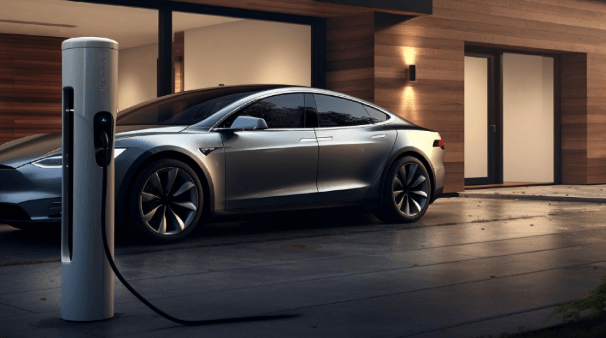What are the emerging trends in the electric vehicle market in the USA?

Introduction
The electric vehicle (EV) market in the USA is experiencing a rapid transformation driven by technological innovations, evolving consumer preferences, and supportive policies. As the country aims to reduce its carbon footprint and enhance energy independence, the adoption of electric vehicles is accelerating. This article delves into the emerging trends in the EV market, highlighting key developments and future directions.
Technological Advancements in Electric Vehicles
The EV market is benefiting from significant technological advancements that enhance vehicle performance, efficiency, and user experience. Innovations in battery technology, such as solid-state batteries, are promising longer ranges and faster charging times. Additionally, advancements in electric drivetrains and regenerative braking systems are contributing to better energy efficiency.
Battery Technology Innovations
The evolution of battery technology is at the heart of the electric vehicle revolution. Solid-state batteries, which use solid electrolytes instead of liquid ones, are being developed to provide higher energy densities and improved safety. This innovation could lead to electric vehicles with longer ranges and shorter charging times, addressing two of the main concerns of potential EV buyers.
Electric Drivetrains and Efficiency Improvements
Improvements in electric drivetrains are enhancing the overall efficiency and performance of electric vehicles. These advancements include more efficient motors, better thermal management systems, and innovative transmission designs. Regenerative braking systems, which capture and store energy during braking, are also becoming more efficient, contributing to longer vehicle ranges and reduced energy consumption.
Consumer Behavior and Market Dynamics
Consumer preferences are shifting towards electric vehicles due to various factors, including environmental concerns, lower operating costs, and advancements in vehicle technology. This shift is influencing market dynamics and driving the growth of the EV market in the USA.
Increasing Demand for Sustainable Mobility
As awareness of environmental issues grows, more consumers are opting for sustainable mobility solutions. Electric vehicles, with their zero tailpipe emissions, are seen as a key component of a greener transportation system. This increasing demand for sustainable mobility is driving the growth of the EV market and encouraging manufacturers to expand their electric vehicle offerings.
Cost of Ownership and Incentives
One of the major advantages of electric vehicles is their lower operating costs compared to traditional internal combustion engine vehicles. With fewer moving parts, EVs typically require less maintenance and have lower fuel costs. Additionally, federal and state incentives, such as tax credits and rebates, are making electric vehicles more affordable for consumers, further boosting their adoption.
Government Policies and Support
Supportive government policies, including regulatory measures, financial incentives, and infrastructure development initiatives, are crucial to the growth of the electric vehicle market in the USA.
Regulatory Measures and Emission Standards
Regulatory measures, such as stringent emission standards and fuel efficiency requirements, are encouraging automakers to invest in electric vehicle technology. The USA is implementing policies aimed at reducing greenhouse gas emissions and promoting cleaner transportation options, which are driving the shift towards electric vehicles.
Financial Incentives and Rebates
Financial incentives, such as federal tax credits and state-specific rebates, are making electric vehicles more affordable for consumers. These incentives are designed to offset the higher upfront costs of electric vehicles and encourage more people to make the switch from conventional vehicles.
Infrastructure Development Initiatives
The development of a robust charging infrastructure is essential for the widespread adoption of electric vehicles. Government initiatives aimed at expanding the charging network, including the installation of fast-charging stations along major highways and in urban areas, are making it easier for EV owners to charge their vehicles conveniently.
Innovations in Charging Infrastructure
The expansion and improvement of charging infrastructure are critical for supporting the growing number of electric vehicles on the road. Innovations in charging technology are making it easier and faster for EV owners to recharge their vehicles.
Fast-Charging Networks
The development of fast-charging networks is a key trend in the EV market. Fast chargers can significantly reduce charging times, making long-distance travel more feasible for electric vehicle owners. Companies and government agencies are investing in the expansion of fast-charging networks across the country, ensuring that EV drivers have access to quick and convenient charging options.
Wireless Charging Technology
Wireless charging technology is another emerging trend in the EV market. This technology allows electric vehicles to charge without the need for physical connections, using electromagnetic fields to transfer energy. Wireless charging is expected to enhance the convenience of owning an electric vehicle, particularly for urban dwellers who may not have access to traditional charging stations.
Electric Vehicle Models and Market Expansion
The variety of electric vehicle models available to consumers is expanding, with automakers introducing new models across different segments. This diversification is making electric vehicles more accessible to a broader range of consumers.
Diverse Vehicle Segments
Automakers are introducing electric vehicles across various segments, including sedans, SUVs, trucks, and even luxury cars. This diversification is catering to different consumer preferences and needs, from compact urban vehicles to larger family-oriented models and high-performance sports cars.
Affordable Electric Vehicles
One of the key trends in the EV market is the introduction of more affordable electric vehicles. Manufacturers are developing budget-friendly EV models with lower price points, making electric vehicles accessible to a wider audience. These affordable options are crucial for increasing the adoption of electric vehicles and achieving broader market penetration.
Autonomous Driving and Electric Vehicles
The integration of autonomous driving technology with electric vehicles is another significant trend in the EV market. Autonomous electric vehicles have the potential to revolutionize transportation by offering new levels of convenience and safety.
Self-Driving Capabilities
Electric vehicles equipped with self-driving capabilities are being developed and tested by several automakers and technology companies. These autonomous vehicles use advanced sensors, artificial intelligence, and machine learning algorithms to navigate and operate without human intervention. The combination of electric powertrains and autonomous driving technology is expected to transform the way people travel.
Impact on Urban Mobility
Autonomous electric vehicles could have a profound impact on urban mobility. They have the potential to reduce traffic congestion, lower transportation costs, and improve road safety. Additionally, self-driving electric vehicles could be used for ride-sharing and public transportation services, further promoting sustainable mobility in cities.
Battery Recycling and Sustainability
The sustainability of electric vehicles extends beyond their use on the road. Battery recycling and the development of a circular economy for EV batteries are emerging trends aimed at reducing the environmental impact of electric vehicle production and disposal.
Recycling Technologies
Advancements in battery recycling technologies are making it possible to recover valuable materials from used EV batteries. These technologies are essential for minimizing waste and reducing the demand for new raw materials, which can have significant environmental and economic benefits.
Second-Life Applications
Electric vehicle batteries that are no longer suitable for use in vehicles can be repurposed for second-life applications. These applications include energy storage systems for homes and businesses, which can help to stabilize the grid and store renewable energy. By extending the life of EV batteries, second-life applications contribute to the overall sustainability of electric vehicles.
Economic Impact and Job Creation
The growth of the electric vehicle market is having a positive economic impact, creating new jobs and opportunities in various sectors. From manufacturing to infrastructure development, the EV market is contributing to economic growth and job creation in the USA.
Manufacturing and Supply Chain
The expansion of electric vehicle production is driving job growth in the manufacturing sector. Automakers are investing in new production facilities and expanding their supply chains to meet the increasing demand for electric vehicles. This growth is creating jobs in manufacturing, assembly, and component production.
Infrastructure Development
The development of charging infrastructure is also generating employment opportunities. The installation and maintenance of charging stations require skilled workers, creating jobs in construction, electrical work, and engineering. Additionally, the growth of the EV market is supporting the development of new businesses and services related to electric vehicle charging.
Electric Vehicle Market Challenges
Despite the positive trends, the electric vehicle market faces several challenges that need to be addressed to ensure continued growth and success.
Battery Cost and Raw Material Supply
The cost of batteries remains a significant challenge for the electric vehicle market. Although battery prices have been decreasing, they still represent a substantial portion of the overall cost of an electric vehicle. Additionally, the supply of raw materials, such as lithium and cobalt, is subject to market fluctuations and geopolitical factors, which can impact battery production and pricing.
Charging Infrastructure Gaps
While the charging infrastructure is expanding, there are still gaps in coverage, particularly in rural and remote areas. Ensuring that all regions have access to reliable and convenient charging options is essential for the widespread adoption of electric vehicles.
Consumer Awareness and Education
Raising consumer awareness and educating potential buyers about the benefits and capabilities of electric vehicles is crucial. Misconceptions about range, charging times, and overall performance can deter consumers from considering electric vehicles. Providing accurate information and addressing common concerns is essential for increasing consumer confidence and adoption.
Future Outlook of the Electric Vehicle Market
The future of the electric vehicle market in the USA looks promising, with continued growth and innovation expected in the coming years. Several factors will shape the future trajectory of the market.
Advancements in Technology
Ongoing advancements in battery technology, charging infrastructure, and autonomous driving capabilities will drive the future growth of the electric vehicle market. These innovations will enhance the performance, convenience, and affordability of electric vehicles, making them more attractive to consumers.
Policy and Regulatory Support
Government policies and regulations will continue to play a critical role in the development of the electric vehicle market. Supportive policies, such as stricter emission standards and incentives for EV adoption, will encourage more consumers to make the switch to electric vehicles.
Market Expansion and Competition
As more automakers enter the electric vehicle market, competition will increase, leading to more options and better products for consumers. This competition will drive innovation and help to lower prices, making electric vehicles accessible to a broader audience.







